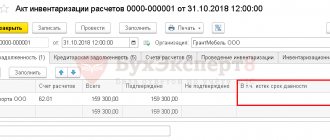Employee meals: organization and tax consequences
Employers often, taking care of their employees, organize meals at the workplace.
And for some businessmen this is a legal obligation. For employees, food from the employer is an important part of motivation. This allows you to save not only money, but also time on preparing lunch or traveling to your home or cafe. But for a businessman, feeding employees at their workplace can lead to additional tax payments.
Let's look at how to make workplace lunches not only convenient for employees, but also beneficial for the business as a whole.
Employee meal plan options
For two categories of employees, according to Article 222 of the Labor Code of the Russian Federation, the employer is obliged to organize free meals at the workplace.
- Workers in hazardous conditions are supposed to be given milk or other substitute products.
- For workers in particularly hazardous conditions, the employer is obliged to organize therapeutic and preventive nutrition for them.
In this case, the cost of food for employees within the established norms reduces the base for income tax or the simplified tax system “Income minus expenses” and is not subject to personal income tax and insurance contributions. There is also no need to charge VAT on the cost of such food.
The organization of meals for other categories of employees remains at the discretion of the company management. But many HR specialists believe that this motivation option is very effective. Therefore, the employer, if he has the opportunity, should make additional expenses that will be paid off by the loyalty of employees.
The procedure for providing meals to all “ordinary” employees who do not work in harmful or dangerous conditions is not established by law. Therefore, employers themselves have the right to choose the most convenient option for them:
- Open your own canteen.
- Issue products.
- Order lunch delivery or full catering service.
- Prepare the room for eating.
- Pay employees for food expenses.
However, the employer’s desire to make the work process more comfortable for its employees often runs into legal requirements. From the point of view of regulatory authorities, a businessman, by providing meals to employees, increases their income. In this case, an additional object for taxation arises. Therefore, you need to carefully study each method and choose the most suitable one.
Document confirming expenses for employee meals
Publication
How the document will allow you to save money. It is not necessary to have a collective agreement to account for employee food expenses. A document outlining the agreement in general terms is sufficient. The Labor Code has several articles regulating the procedure for free meals for workers. For example, every employee has the right to guarantees and compensation established in accordance with the Labor Code (Article 219 of the Labor Code). The Labor Code also regulates the procedure for issuing milk and other therapeutic and prophylactic products at work with hazardous working conditions (Article 222 of the Labor Code). Article 348.10 of the Labor Code regulates the provision of meals at the expense of the employer to athletes and coaches, and articles 41 and 57 of the Labor Code - to other employees.
To avoid problems with accounting for expenses, you need to conclude an employment or collective agreement with them. However, agreements or local regulations are also suitable. Indeed, in addition to the labor and collective agreement, the employer and employee regulate relations with the help of other agreements and local regulations (Articles 5, 8, 56 of the Labor Code). example 1 The company established the procedure for providing free meals in the minutes of the general meeting of company participants. This was enough to take into account expenses and reduce VAT and income tax (decision of the Bryansk Region AS of 10/07/2019 No. A09-6867/2019, resolution of the Central District AS of 07/07/2020 No. F10-1469/20). In addition, there are court decisions according to which a collective agreement is essentially a local normative act (appeal ruling of the Investigative Committee in civil cases of the Khabarovsk Regional Court dated September 28, 2018 No. 33-6071/2018). Income tax. Food expenses for income tax are included in wages (clause 4 of Article 255 of the Tax Code). A mandatory condition for taking into account such expenses, in addition to documentary evidence and economic feasibility, is their reflection in an employment or collective agreement (Article 252 of the Tax Code, letters of the Ministry of Finance dated 05/08/2019 No. 03-04-09/33763 and the Federal Tax Service for Moscow dated 04/13. 2011 No. 16-15/ [email protected] ). However, regulatory authorities insist that these expenses relate to labor costs. That is, to take them into account, it is necessary to determine the amount of income of each employee. If this is not possible, the costs cannot be taken into account as part of labor costs. However, food expenses can actually be taken into account as part of other expenses associated with production and sales (subclause 49, clause 1, article 264 of the Tax Code). After all, paragraph 4 of Article 252 of the Tax Code states: if costs can be attributed to several types of income tax expenses, the taxpayer has the right to independently determine their type. In addition, according to paragraph 25 of Article 270 of the Tax Code, expenses on food can be classified as expenses not taken into account for tax purposes only if such expenses are not specified in labor or collective agreements. This is confirmed by arbitration practice in favor of taxpayers (resolution of the Arbitration Court of the Ural District dated August 25, 2016 No. F09-7988/16). The recent resolution of the Central District Court of Justice dated 07/07/2020 No. F10-1469/20 consolidated a positive position. Unified Agricultural Sciences. Agricultural organizations also have the right to take into account the cost of food for employees on the basis of subparagraph 42 of paragraph 1 of Article 264 of the Tax Code (Resolution of the AS of the West Siberian District dated December 13, 2019 No. F04-6213/19). Simplified. Simplified organizations can take into account food costs on the basis of subclause 6 of clause 2 of Article 346.5 of the Tax Code. The list of expenses under Article 346.5 of the Tax Code is closed. Therefore, when reflecting these expenses, you should adhere to the recommendations of letters from the Ministry of Finance dated 05/08/2019 No. 03-04-09/33763 and the Federal Tax Service of Russia for Moscow dated 04/13. 2011 No. 16-15/ [email protected] : costs must be distributed to each employee. VAT. VAT can be deducted on food if the following conditions are met: there is an invoice; goods (work, services, property rights) were purchased for transactions subject to VAT and registered (Articles 171, 172 of the Tax Code, Resolution of the Central District Administrative Court dated July 7, 2020 No. F10-1469/20). The use of deductions is also permissible in the case of the acquisition of non-production goods, works or services. However, they must be at least indirectly related to the production process (for example, workwear, office supplies and similar general business expenses). The company does not need to sell meals with VAT to each employee in order to deduct VAT on the costs of such meals. Sample local regulatory act
The transfer of meals to employees is not an implementation within the meaning of paragraph 1 of Article 39 of the Tax Code and subparagraph 1 of paragraph 1 of Article 146 of the Tax Code. These are the organization’s expenses to ensure working conditions for employees (Articles 5, 40, 41, 131 of the Labor Code). There is no obligation to charge VAT (Resolution of the Twentieth AAS dated 02/07/2019 No. 20AP8860/2018, AS of the Central District dated 06/05/2019 No. F10-5077/2018). Officials have a different view. They are confident that if food costs are distributed among employees (which the Ministry of Finance insists on in letter dated 05/08/2019 No. 03-04-09/33763, if such costs are classified as labor costs under Article 255 of the Tax Code), then from the sale food for an employee during paid or gratuitous settlements with him, it is necessary to charge VAT and take the incoming amount of VAT on the purchase of food for deduction (clause 1 of Article 39, subclause 1 of clause 1 of Article 146 of the Tax Code, letter of the Ministry of Finance dated January 27, 2020 No. 03 - 07-11/4421). If there is no such distribution of expenses between employees, there is no obligation to charge VAT on the sale of food to an employee, as well as a deduction on incoming documents for the purchase of food. A local regulation confirming food expenses will reduce the tax base even if there is no reference to these expenses in the collective or employment agreement. In what form is it compiled? Document your employee meal expenses in writing. Familiarize all employees with this document (Articles 22, 68 of the Labor Code) against signature. What must be in the document. Clearly state the procedure for providing food and the conditions for reimbursement of food costs. Indicate the cost of paying for food to the employee (if you plan to compensate it in cash) or the quantitative amount (if it is free of charge). For example, write down the procedure for issuing coupons, cards or other payment methods. It is necessary that the costs of coupons be related to the wage system in accordance with the Labor Code. Emphasize that providing meals is the employer's responsibility under the employment relationship with employees. Additional security measures. It is worth justifying the production necessity of feeding workers. For example, there are no canteens within walking distance of the company, poor quality of food at catering outlets, or a complex technological process in production. example 2 Due to high requirements for food and sanitary safety, the organization banned its employees from bringing lunch with them and organized a buffet for them. The decision to organize catering was formalized in the minutes of a meeting of employees and management of the enterprise. The courts supported the organization (resolution of the Central District Court of July 7, 2020 No. A09-6867/2019).
Add a comment
Rating
0 0 0
Tags
income tax VAT primary documentation simplified taxation system (STS)
Meals for employees in their own canteen
There is nothing better and tastier than freshly prepared food. But to organize a full-fledged dining room, you need to take into account many points:
- The premises must be in a non-residential building.
- The dining room must be equipped with a sewerage system, an exhaust hood and a place for collecting food waste.
- There are special requirements for the finishing of the premises.
- It is necessary to hire qualified personnel.
- Organizing your own canteen will significantly complicate your accounting.
- You need to take into account many Sanitary Pins and prepare for regular inspections, since public catering establishments are strictly controlled.
The main disadvantage is that opening your own canteen is very expensive. Therefore, this option is suitable mainly for medium and large organizations.
However, with the right approach, the company will be able to generate additional income by providing the opportunity to use the canteen services not only to employees, but also to third-party clients. As a result, catering may even become a separate type of business.
Having your own dining room also has significant advantages:
- You can control the quality of employee diets.
- The number of sick leaves due to gastrointestinal diseases is decreasing.
- Possibility of additional income for the company.
If an employee pays for lunch himself, then he does not have any additional taxable income. The employer can take into account the costs of maintaining the canteen for tax purposes on a general basis.
If the canteen meets the parameters for the use of UTII in terms of the area of the hall (up to 150 sq. m), then until the end of 2021 it can operate on an “imputed” basis. But for this, the organization itself must have no more than 100 people. But in practice, such companies rarely open their own canteens.
Is food for employees subject to VAT?
Imposition of value added tax on employee meals depends on whether it is possible to personify those who eat (Letter of the Ministry of Finance dated January 27, 2020 No. 03-07-11/4421):
| Possibility of personalization | Object of VAT taxation | Notes |
| You can personalize an employee | Arises (clause 1 of article 39, clause 1 of article 146 of the Tax Code of the Russian Federation) | Regarding the personification for the purposes of taxation and contributions of the income of workers receiving meals, there is a fairly extensive judicial practice and a base of explanations from the Ministry of Finance. Controlling authorities and judges believe:
Important! From court decisions we can conclude: if the receipt of food is specified in the collective agreement (or employment contracts) as an integral part of the employee’s income, food can be considered a form of remuneration and not subject to VAT as gratuitous services |
| You cannot personalize an employee | Doesn't occur | In practice, only one option meets these conditions: meals are organized as a buffet, when it is impossible to track which of the workers ate what and how much, and whether they ate at all. This also includes the employer’s purchase of tea, coffee, cookies, etc. for the office |
If an employer charges VAT on employee meals, he can deduct the VAT paid on the purchase of this food or components for its production. Exception: cases where the employer is required to provide food to employees by law. Such food is compensation for harmful working conditions and is not subject to VAT.
Delivering lunches or issuing groceries to employees
An organization can enter into an agreement for on-site catering or lunch delivery.
Advantages of this method:
- No need to buy groceries or prepare lunches yourself.
- Possibility of pre-ordering with a choice of menu.
- Corporate volume discounts and free shipping.
- Quality guarantee from a supplier who specializes in catering.
Providing food is a compromise option when the employer does not want to spend large sums on food, but strives to provide employees with everything they need for tea breaks.
The company’s obligation to organize meals for employees in one way or another must be reflected in internal regulations: regulations on remuneration, collective agreement, etc. The documents must detail exactly who is provided with food and in what form.
In this case, the employer has the right to take into account the costs of food for employees for income tax (clause 25 of Article 255 of the Tax Code of the Russian Federation, letter of the Ministry of Finance dated July 23, 2018 No. 03-03-07/51494).
For the simplified tax system “Income minus expenses” the approach will be similar, because Labor costs and equivalents are taken into account under this regime in the same way as income tax (clause 6, clause 1 and clause 2, article 346.16 of the Tax Code of the Russian Federation).
VAT may not be charged on the cost of issued lunches or products (letter of the Ministry of Finance dated 03/06/2015 N 03-07-11/12142). But in this case it will not be possible to deduct input tax. VAT amounts invoiced by the catering company or food supplier can be included as expenses for income tax purposes.
When a company purchases ready-made meals or products for the purpose of providing meals to employees, the question arises about the taxation of payments in kind. Indeed, in the general case, these costs are employee income in kind. Therefore, personal income tax must be withheld from the cost of free food, and insurance premiums must be charged on them.
However, these payments are “personalized”, i.e. when calculating, they must be tied to a specific employee - the recipient of the income. Therefore, if it is impossible to accurately determine which employees received free meals, then these expenses may not be subject to personal income tax and insurance premiums (letter of the Ministry of Finance of the Russian Federation dated August 3, 2018 No. 03-04-06/55047).
When purchasing ready-made lunches, to make it impossible to identify the income of each employee, it is enough to place a general order, which will not be detailed. If an organization purchases products, then it is also impossible to find out how much and which employee received, for example, sugar and tea. Therefore, in such situations, there is a reason not to accrue mandatory payments - it is simply impossible to specify the income for each employee.
But it is impossible to give a full guarantee that with such a scheme it will be possible to do without paying personal income tax and contributions. Inspectors can calculate these payments by calculation, for example, based on the total costs and the number of employees receiving meals (letter of the Ministry of Finance dated May 17, 2018 No. 03-04-06/33350).
In addition, if the employer does not charge insurance premiums for the cost of food for employees, then, according to tax authorities, he cannot take these costs into account for income tax (letter of the Ministry of Finance dated March 4, 2008 No. 03-03-06/1/133). There is also an opposite position, but you will most likely have to defend it in court (Resolution of the Federal Antimonopoly Service of the Moscow District dated April 6, 2012 No. A40-65744/11-90-285).
Paying for food on your own initiative
Personal income tax
When determining the tax base for personal income tax, all income of employees received both in cash and in kind must be taken into account (clause 1 of Article 210 of the Tax Code of the Russian Federation).
If employees are paid a cash subsidy for food, such payment is subject to personal income tax (Clause 1, Article 209 of the Tax Code of the Russian Federation). With other payment methods, the cost of free meals is income in kind, which is also subject to personal income tax (letter of the Ministry of Finance of Russia dated June 28, 2013 No. 03-04-06/24677).
However, in order to calculate personal income tax, it is necessary to establish the amount of income of each employee. Only in this case is tax charged on the amount of the subsidy (clause 8 of the information letter of the Presidium of the Supreme Arbitration Court of the Russian Federation dated June 21, 1999 No. 42). That is, for calculating personal income tax, the personalized accounting of each employee’s income is of decisive importance. If such accounting is organized (for example, when food stamps are issued to employees personally), then personal income tax must be charged on the cost of food.
If it is impossible to organize personalized accounting (for example, when purchasing drinking water, tea or coffee), then no income subject to personal income tax arises (letter of the Ministry of Finance of Russia dated January 30, 2013 No. 03-04-06/6-29).
A special situation is when food is organized on a buffet basis. The Ministry of Finance expressed the opinion that in this case, the income of employees can be determined by calculation: based on the total cost of food for employees and information from the working time sheet (letter of the Ministry of Finance of Russia dated April 18, 2012 No. 03-04-06/6-117). However, judges do not agree with this approach (resolution of the Federal Antimonopoly Service of the Far Eastern District dated June 15, 2009 No. F03-2484/2009).
Please note , the Ministry of Finance insists that the employer must take all possible measures to assess and record the income received by employees (letter of the Ministry of Finance of Russia dated 03/06/13 No. 03-04-06/6715).
Insurance premiums
When an employer pays employees monetary compensation (subsidies) for food, they must be charged pension, medical and injury contributions (Part 1, Article 7 of the Federal Law of July 24, 2009 No. 212-FZ, Clause 1, Article 20.1 of the Federal Law dated 07.24.98 No. 125-FZ, letter of the Ministry of Health and Social Development of Russia dated 05.19.10 No. 1239-19).
With other payment options, the determining factor for calculating contributions is the ability to determine the income of each employee. If the exact amount of income is known, then contributions must be added to the cost of food. Moreover, the accrual base should include the cost of the food provided, including VAT (Part 6, Article 8 of Law No. 212-FZ, Clause 3, Article 20.1 of Law No. 125-FZ).
If the amount of income cannot be determined (for example, with the “buffet” option), then insurance premiums are not charged for the cost of food. The bottom line is that only targeted payments in favor of specific employees are subject to contributions (letter of the Ministry of Labor of Russia dated May 24, 2013 No. 14-1-1061). This position is confirmed by the decision of the Supreme Arbitration Court, which stated: if it is impossible to determine the economic benefit of each employee, then insurance premiums are not charged (determined by the Supreme Arbitration Court of the Russian Federation dated 09.09.13 No. 11907/13).
Organizing a place to eat
There is an option for those employers who, for some reason, are not suitable for all the previous ones. You can increase employee loyalty by organizing a place to eat. To do this, you will need an empty room, household appliances and furniture. Appliances may include a refrigerator, microwave, kettle, coffee machine. Some employers go even further and provide not just a kitchen where you can heat up food, but also a full-fledged recreation area - with chairs, board games and more.
Firstly, this measure will allow employees not to waste time going to third-party cafes and to comply with safety precautions in the workplace.
Secondly, organizing a place for food requires only one-time investments, since the company only equips the place without further spending money on food for employees. Consequently, the problem with “salary taxes” discussed in the previous section will not arise.
In order for these costs to be taken into account for tax purposes, it is necessary to reflect the employer’s obligation to create conditions for eating in local regulations.
Employee benefits
The simplest method, which does not require the employer to take special measures to organize meals for employees. However, it is also the most “expensive” from a tax point of view. These payments are personalized and therefore are subject to all contributions and personal income tax.
That is, at least 30% of insurance premiums must be added to the amount of costs for lunches and 13% of personal income tax must be withheld from payments.
In order to take into account additional payments for employee meals when calculating income tax and the simplified tax system, they, like other types of similar expenses, must be reflected in internal personnel documents.
But this option may be convenient for many employees, because... they choose how and where to dine.
Conclusion
The employer is obliged to provide meals only to certain categories of employees. In all other cases, this is his voluntary decision. Therefore, if a businessman wants to increase the loyalty and motivation of employees, then he can choose a method that is convenient for himself.
With any option for voluntary organization of free meals for employees, this obligation of the employer must be reflected in internal documents. Otherwise, the costs cannot be taken into account to reduce the tax base.
For a large business, the best option is your own canteen. In this case, not only there are no “extra” taxes, but the organization can also receive additional income.
If an employer provides employees with free lunches or groceries, then, according to tax authorities, they should be subject to personal income tax and contributions, even if personalized accounting is not possible. The opposite position will most likely lead to the need to resolve the issue in court.
If you simply add the additional payment for employee meals to the salary, then taxes will have to be paid in any case. But with this option, there is no need to equip the premises, purchase and deliver products, etc.
As a result, the choice depends on the financial capabilities of the employer and his readiness for additional difficulties both in organizing meals for employees and in the event of an inspection.
Methods for organizing staff meals
The employer may provide for the possibility of partial or full compensation for the cost of lunches; these obligations to the staff are enshrined in the collective agreement or other local acts of the company. Another case of providing food is the provision of food in accordance with legal requirements to those employees whose work is harmful.
The employer is obliged to provide food to employees in two situations (Article 222 of the Labor Code of the Russian Federation):
| Working conditions | What is due |
| Harmful | Free provision of milk or similar products |
| Particularly harmful according to the results of a special assessment | Free provision of therapeutic and preventive nutrition |
For employees of hazardous industries, the provision of products in kind can be replaced by payment of an equivalent amount of money. The interested employee needs to write a statement addressed to management. The main thing is that such a replacement is provided for by a collective or labor agreement.
When directly paying for food to employees, the entries will differ from the accounting entries in the case of issuing food in kind.
In other cases, catering in the office is the good will of the employer. When deciding to introduce this staff support measure, management chooses from the following options:
- organizing your own canteen, where free lunches will be prepared and a buffet will be served;
- searching for suppliers who will deliver food for catering;
- purchasing products that employees can use free of charge (for example, coffee, tea, cookies);
- issuing cash grants and coupons for purchasing lunches.
If the employer has decided to pay for food for staff, he documents it in the collective agreement, regulations on remuneration or employee employment contracts.








